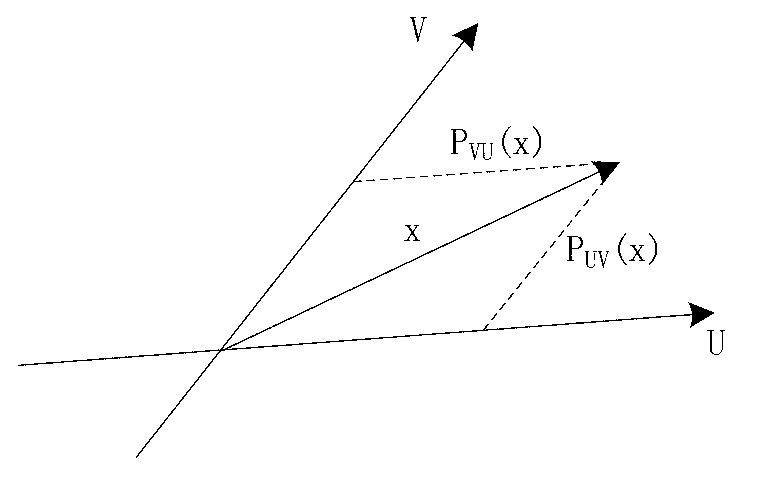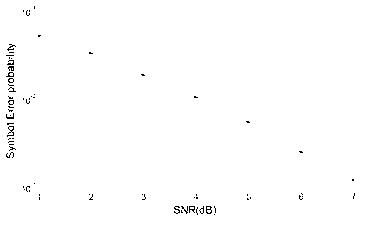Affine projection decoding method for uplink multi-user multi-input multi-output (MIMO) system based on user selection
An affine projection, multi-user technology, applied in the field of affine projection decoding, which can solve the problem of high decoding complexity
- Summary
- Abstract
- Description
- Claims
- Application Information
AI Technical Summary
Problems solved by technology
Method used
Image
Examples
Embodiment 1
[0044] Example 1: figure 2 Simulation conditions: All user constellations are 4-QAM, assuming that the base station has 8 antennas, the cell has 6 users, and the two users decode together. That is to say M=8, K=6, k=2.
[0045] figure 2 Among them, M=8, K=6, k=2, then there will be 15 selection methods. Choose any decoding method, assuming 3 H 1 They are columns 1 and 3, columns 2 and 4 and columns 5 and 6 of H, respectively. Then calculate 3 separately The matrix has 6 elements on the diagonal, and the smallest one is selected. Since there are 15 selection methods, there will be 15 minimum values. Finally, a maximum is selected from the 15 minimum values. The combination with this maximum value is the best combination. For each group in this optimal combination (there are 3 groups in total), according to the fifth to eighth steps of decoding in the above steps, the error probability curve obtained by the error is as follows figure 2 shown.
Embodiment 2
[0046] Example 2: image 3 Simulation conditions: All user constellations are BPSK, assuming that the base station has 8 antennas, the cell has 6 users, and the three users decode together. That is to say M=8, K=6, k=3. image 3 Among them, M=8, K=6, k=3, then there will be 20 kinds of selection methods. Choose any decoding method, assuming 2 H 1 They are columns 1, 3, and 4, and columns 2, 5, and 6 of H, respectively. Then calculate the 2 matrix, so that there are 6 elements on the diagonal, and one of the smallest is selected. Since there are 20 selection methods, there will be 20 minimum values. Finally, a maximum is selected from the 20 minimum values. The combination with this maximum value is the best combination. For each group in this optimal combination (there are 2 groups in total), follow the fifth to eighth steps in the above steps to decode, and the obtained error probability curve is as follows image 3 shown.
PUM
 Login to View More
Login to View More Abstract
Description
Claims
Application Information
 Login to View More
Login to View More - R&D
- Intellectual Property
- Life Sciences
- Materials
- Tech Scout
- Unparalleled Data Quality
- Higher Quality Content
- 60% Fewer Hallucinations
Browse by: Latest US Patents, China's latest patents, Technical Efficacy Thesaurus, Application Domain, Technology Topic, Popular Technical Reports.
© 2025 PatSnap. All rights reserved.Legal|Privacy policy|Modern Slavery Act Transparency Statement|Sitemap|About US| Contact US: help@patsnap.com



